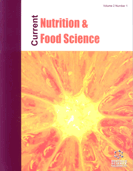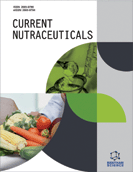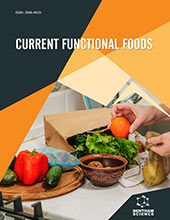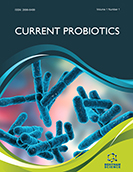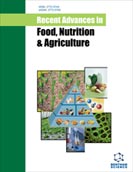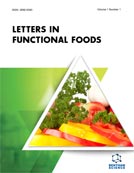Abstract
Previously, we have examined the antimicrobial activity of sweet cheery (Prunus avium L.) extracts on a wide spectrum of gram-positive and gram-negative bacteria in addition to the fungus, Candida albicans. To further understand the effect of a variety of extracts of sour black and red cherries (Prunus cerasus L.) on bacterial/fungus growth, the antimicrobial activities of red sour cherry extracts (SCE) were measured in culture in this study. SCEs were subdivided into variables: whole juice extracts (WJE), methanol-extracted juice (MEJ), ddH2O-extracted pomace (dPOM), and methanolextracted pomace (mPOM). Bacteria and fungus were grown on Mueller-Hinton agar suitable for disk-diffusion method. WJE showed attenuating inhibition on Bacillus subtilis, Enterococcus Group D, Staphylococcus aureus, Streptococcus Group B (GBS), Citrobacter koseri, Enterobacter cloacae, Escherichia coli, Klebsiella pneumoniae, Proteus vulgaris, and Pseudomonas aeruginosa, although inhibition of B. subtilis, C. koseri, and E. cloacae is less prominent, and there was no attenuation of C. albicans. By contrast, MEJ showed prominent inhibition on B. subtilis, Enterococcus Group D, S. aureus, Streptococcus Group A (GAS), GBS, C. koseri, E. cloacae, E. coli, E. coli ESBL, K. pneumoniae, P. vulgaris, and P. aeruginosa, although inhibition of B. subtilis, GAS, GBS, C. koseri, and P. aeruginosa is less attenuating, and there was strong inhibition of C. albicans. Furthermore, dPOM showed inhibition on B. subtilis, S. aureus, GAS, GBS, C. koseri, E. cloacae, E. coli, E. coli ESBL, K. pneumoniae, P. vulgaris, and P. aeruginosa, although inhibition of GAS, GBS, E. cloacae, and E. coli is less prominent, and there was no inhibition of C. albicans. Similarly, mPOM showed attenuating effect on B. subtilis, Enterococcus Group D, S. aureus, GAS, C. koseri, E. coli, E. coli ESBL, K. pneumoniae, P. vulgaris, and P. aeruginosa, although inhibition of gram-positive bacteria, C. koseri, and E. coli ESBL is less prominent, and there was no inhibition of C. albicans. These results confirm the attenuating effect of P. cerasus extracts on the differential growth of gram-positive and gram-negative bacteria. Since many of the aforementioned are pathogenic in their nature, cherry extracts are interestingly of value in regulating/attenuating the growth of microorganisms of medical importance.
Keywords: Antimicrobial, attenuation, bacteria, disk-diffusion, fungus, gram-positive, gram-negative, Prunus cerasus, red sour cherries.
Current Nutrition & Food Science
Title:The Antimicrobial Activity of Red Sour Cherry (Prunus cerasus L.) Extracts: II. Measurement of Sensitivity and Attenuation of Gram-Positive and Gram-Negative Bacteria and C. albicans in Culture
Volume: 9 Issue: 3
Author(s): Lama B. Hanbali, Raya S. Almor, Diana R. Bou Teen, Rana M. Ghadieh, Hiba A. Hasan, Yasmine K. Nakhal and John J. Haddad
Affiliation:
Keywords: Antimicrobial, attenuation, bacteria, disk-diffusion, fungus, gram-positive, gram-negative, Prunus cerasus, red sour cherries.
Abstract: Previously, we have examined the antimicrobial activity of sweet cheery (Prunus avium L.) extracts on a wide spectrum of gram-positive and gram-negative bacteria in addition to the fungus, Candida albicans. To further understand the effect of a variety of extracts of sour black and red cherries (Prunus cerasus L.) on bacterial/fungus growth, the antimicrobial activities of red sour cherry extracts (SCE) were measured in culture in this study. SCEs were subdivided into variables: whole juice extracts (WJE), methanol-extracted juice (MEJ), ddH2O-extracted pomace (dPOM), and methanolextracted pomace (mPOM). Bacteria and fungus were grown on Mueller-Hinton agar suitable for disk-diffusion method. WJE showed attenuating inhibition on Bacillus subtilis, Enterococcus Group D, Staphylococcus aureus, Streptococcus Group B (GBS), Citrobacter koseri, Enterobacter cloacae, Escherichia coli, Klebsiella pneumoniae, Proteus vulgaris, and Pseudomonas aeruginosa, although inhibition of B. subtilis, C. koseri, and E. cloacae is less prominent, and there was no attenuation of C. albicans. By contrast, MEJ showed prominent inhibition on B. subtilis, Enterococcus Group D, S. aureus, Streptococcus Group A (GAS), GBS, C. koseri, E. cloacae, E. coli, E. coli ESBL, K. pneumoniae, P. vulgaris, and P. aeruginosa, although inhibition of B. subtilis, GAS, GBS, C. koseri, and P. aeruginosa is less attenuating, and there was strong inhibition of C. albicans. Furthermore, dPOM showed inhibition on B. subtilis, S. aureus, GAS, GBS, C. koseri, E. cloacae, E. coli, E. coli ESBL, K. pneumoniae, P. vulgaris, and P. aeruginosa, although inhibition of GAS, GBS, E. cloacae, and E. coli is less prominent, and there was no inhibition of C. albicans. Similarly, mPOM showed attenuating effect on B. subtilis, Enterococcus Group D, S. aureus, GAS, C. koseri, E. coli, E. coli ESBL, K. pneumoniae, P. vulgaris, and P. aeruginosa, although inhibition of gram-positive bacteria, C. koseri, and E. coli ESBL is less prominent, and there was no inhibition of C. albicans. These results confirm the attenuating effect of P. cerasus extracts on the differential growth of gram-positive and gram-negative bacteria. Since many of the aforementioned are pathogenic in their nature, cherry extracts are interestingly of value in regulating/attenuating the growth of microorganisms of medical importance.
Export Options
About this article
Cite this article as:
Hanbali B. Lama, Almor S. Raya, Bou Teen R. Diana, Ghadieh M. Rana, Hasan A. Hiba, Nakhal K. Yasmine and Haddad J. John, The Antimicrobial Activity of Red Sour Cherry (Prunus cerasus L.) Extracts: II. Measurement of Sensitivity and Attenuation of Gram-Positive and Gram-Negative Bacteria and C. albicans in Culture, Current Nutrition & Food Science 2013; 9 (3) . https://dx.doi.org/10.2174/1573401311309030006
| DOI https://dx.doi.org/10.2174/1573401311309030006 |
Print ISSN 1573-4013 |
| Publisher Name Bentham Science Publisher |
Online ISSN 2212-3881 |
 9
9
- Author Guidelines
- Bentham Author Support Services (BASS)
- Graphical Abstracts
- Fabricating and Stating False Information
- Research Misconduct
- Post Publication Discussions and Corrections
- Publishing Ethics and Rectitude
- Increase Visibility of Your Article
- Archiving Policies
- Peer Review Workflow
- Order Your Article Before Print
- Promote Your Article
- Manuscript Transfer Facility
- Editorial Policies
- Allegations from Whistleblowers
- Announcements
Related Articles
-
Role of Defensins and Cathelicidin LL37 in Auto-Immune and Auto- Inflammatory Diseases
Current Pharmaceutical Biotechnology Applications of Mesoporous Materials as Excipients for Innovative Drug Delivery and Formulation
Current Pharmaceutical Design Therapeutic Targeting of CPT-11 Induced Diarrhea: A Case for Prophylaxis
Current Drug Targets Pathogenesis, Experimental Models and Contemporary Pharmacotherapy of Irritable Bowel Syndrome: Story About the Brain-Gut Axis
Current Neuropharmacology Recombinant Protein Based Therapeutics for IPF
Inflammation & Allergy - Drug Targets (Discontinued) Lagenaria siceraria: A Potential Source of Anti-Hyperlipidemic and Other Pharmacological Agents
Current Nutrition & Food Science Melatonin and Respiratory Diseases: A Review
Current Topics in Medicinal Chemistry Interrelationships Between Cyclooxygenases and Aromatase: Unraveling the Relevance of Cyclooxygenase Inhibitors in Breast Cancer
Anti-Cancer Agents in Medicinal Chemistry Application of dsRNA in Cancer Immunotherapy: Current Status and Future Trends
Anti-Cancer Agents in Medicinal Chemistry Recent Inventions in Powder Technology and Granular Science Incorporating Improved Drug Delivery
Recent Patents on Engineering PRL-3, An Emerging Marker of Carcinogenesis, Is Strongly Associated with Poor Prognosis
Anti-Cancer Agents in Medicinal Chemistry Carbonic Anhydrases as Drug Targets - An Overview
Current Topics in Medicinal Chemistry Hemicellulose from Plant Biomass in Medical and Pharmaceutical Application: A Critical Review
Current Medicinal Chemistry Medicinal Properties of Mangiferin, Structural Features, Derivative Synthesis, Pharmacokinetics and Biological Activities
Mini-Reviews in Medicinal Chemistry Clinical Experience with Therapeutic Vaccines Designed for Patients with Hepatitis
Current Pharmaceutical Design Antitumor Titanium Compounds
Mini-Reviews in Medicinal Chemistry The Impact of Probiotic on Gut Health
Current Drug Metabolism Functions of Ghrelin in Brain, Gut and Liver
CNS & Neurological Disorders - Drug Targets Targeting the Hedgehog Pathway: The development of Cyclopamine and the Development of Anti-Cancer Drugs Targeting the Hedgehog Pathway
Mini-Reviews in Medicinal Chemistry Glycoconjugates As Vaccines for Cancer Immunotherapy: Clinical Trials and Future Directions
Anti-Cancer Agents in Medicinal Chemistry


